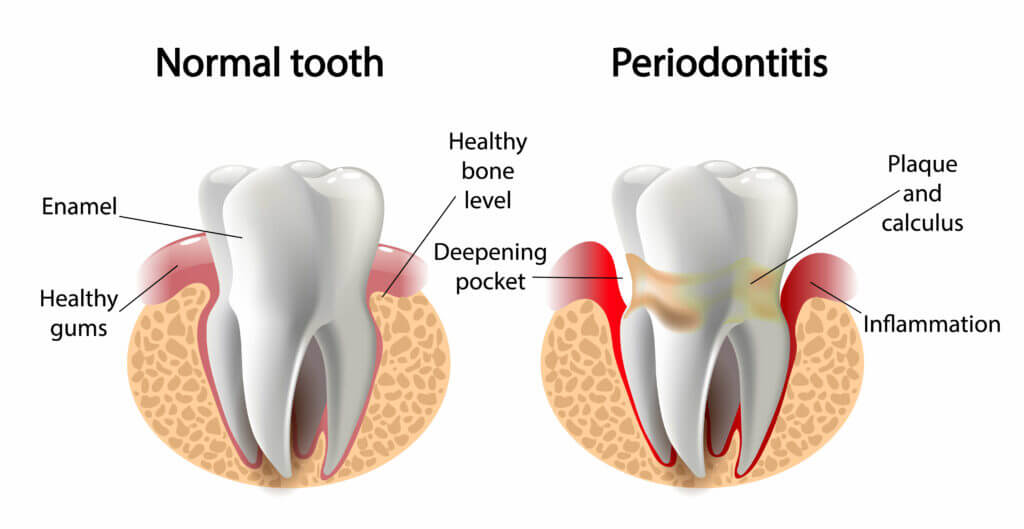
What is Gum Disease?
Do I have Gum Disease? In order to answer your question, lets first understand what things mean. Gingiva is the gum tissue that covers and protects the bone that supports your teeth. Periodontium references the tissues that support the teeth: the gingiva, tiny ligaments and bone. “Itis” means inflammation. Add it to the end of a word and you have inflammation of that thing.
Gingivitis: When Bacterial plaque works its way below the gum tissue, your body recognizes this as a foreign substance, much like it would a splinter in your finger. To remove this foreign substance, your body sends blood with cells to fight off the plaque……this process is called inflammation. If the plaque isn’t removed daily through proper oral hygiene (brushing and flossing), your gums will start to bleed. This is gingivitis, or, inflammation of the gums. Most people have a bit of gingivitis, and the good thing is that it is easily treated with good oral hygiene and regular visits to the dentist for routine cleanings. With gingivitis, patients usual get their teeth cleaned every six months.
Periodontitis occurs when all of the supporting tissues of the teeth become inflamed. This is more serious. When gingivitis is left untreated, the soft bacterial plaque becomes mineralized and forms calculus or tartar. In this form, flossing and brushing does not get the job done. A dental professional must remove it from the surfaces of your teeth. If tartar is left below the gum surface, the bone that supports the teeth become inflamed and will begin to pull away, leaving the teeth weak and susceptible to loosening and eventually falling out. In severe cases, some patients may require seeing a gum specialist, or a periodontist. Gum surgery may be needed to clean the roots of your teeth. If the periodontitis is moderate, treatment can be completed in your dental office. Patients with periodontitis have their teeth cleaned every three to four months to maintain the bone they have left.
Diagnosis and Treatment
How do I know I have gum disease? At least once a year, your hygienist will take a series of readings around each tooth. Using a small probe, the hygienist records your pocket depths of the gum sulcus that surrounds your tooth. The readings work like this:
- 1-3mm pocket is normal periodontium
- 3-5mm pocket is the beginning of periodontal disease
- Greater than 5mm is periodontal disease
Do I need periodontal treatment?
If you have bleeding gums, loose teeth that are sensitive to temperature and chewing, maybe. Make an appointment and we will figure it out.
Maintenance
It is essential for patients with a past history of or have recently been treated for periodontal disease to follow a strict maintenance routine. This routine involves diligent twice daily brushing and nightly flossing as well as professional cleanings with a dental hygienist every 3 months.
Mouth-Body Connection
There are many well established connections between the presence of periodontal disease and other systemic diseases including:
- Diabetes
- Cardiovascular disease
- Pregnancy complications – low birth weight
- Osteoporosis
- Respiratory disease
Treating your periodontal disease and working hard to maintain your oral health are vital components of leading a healthy lifestyle.
